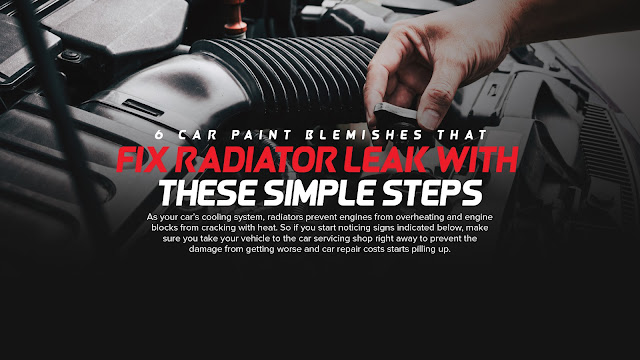As your car’s cooling system, radiators prevent engines from overheating and engine blocks from cracking with heat. So if you start noticing signs indicated below, make sure you take your vehicle to the car servicing shop right away to prevent the damage from getting worse and car repair costs starts pilling up.
There are different signs that will tell you if your radiator is starting to fail. One would be overheating. When dirt, bugs, or road grime gets stuck and accumulate in your radiator, it becomes harder for the air to flow through it. As a result, it’s harder to cool the engine especially when the vehicle is stopped and the radiator have to rely on just the fan to keep it cool which is why it overheats even when idle.
Another sign is sludge in the radiator. The coolant in your vehicle should be yellow or green or red normally. As the radiator goes bad, contaminants discolor the fluid making it a rusty or oil color. This turns into sludge and the fluid will not be able to cool the engine efficiently because it will not drain properly and remain in the radiator. This can be from a failing radiator for vehicles that contain a transmission cooler inside the radiator. The barrier between the coolant and transmission fluid fails and the fluids mix. If you or a mechanic notice sludge in your radiator, it will need to be replaced as it can cause extensive damage to the engine and transmission.
It could also be the frequent low level of coolant. If the level is below the minimum line, top it up to the maximum line and monitor on a daily basis. If you have to top up the coolant reservoir each time it is checked, this could indicate a leak. If it seems that you vehicle is always low on coolant then it’s reasonable to suspect that your radiator have gone bad or at least failing.
Now speaking of leak, the coolant, as the name suggests, helps the radiator to cool down. However, when there’s a leak or crack in the radiator, you’ll see coolant leak on the floor underneath your car, since the coolant flows through the radiator. If the leak is more of the issue that you’ve been encountering lately, you can actually fix this problem easily. If you’ll use any stop-leak products, follow the instructions carefully and it could delay a permanent fix for a later time.
Step 1: Drain The Old Coolant
Usually, not replacing the water coolant mixture is the reason you’re having leakage issue in your radiator. So the first thing that you must do if you’re trying to fix it is to drain the old coolant.
Step 2: Flush The Cooling System
Once you managed to drain all the old coolant, it’s now time to flush the cooling system. To do this, you need a lot of distilled water to rinse the radiator and the whole system. But make sure to activate the thermostat and the AC heater before you do so. Keep in mind to use only distilled water for this step. Tap water contains minerals that can cause sedimentation which is why it’s no good for rinsing the radiator and the whole system using it. You’ll know you’re done with this step if the water being drained have becomes clear and rust-free.
Step 3: Pour In The New Coolant Mixture
Before you pour in the new coolant mixture, make sure that the ratio of distilled water and the manufacturer’s recommended coolant type is right. Measure properly and then pour all of the mixture in the reservoir.
Step 4: Burp
After pouring in the coolant, you need to get rid of possible air trapped in the system. If air gets trapped, it will cause it to boil over and produce steam that is trapped within. Heat and pressure build up; cooling efficiency goes down. Sustained overheating will melt the head gasket, leading to an expensive engine teardown and rebuild.
To do this, you just have to park at a slight incline, or jack up the front with the engine higher than the rest of the vehicle while filling up the radiator.
Step 5: Add Your Stop-Leak Product Of Your Choice
When you’re done burping it, time for the last step which is to add in your choice of stop-leak product. Run the engine up to operating temperature, and check the previous leaking location for oozing. Observe for a few days.


Walang komento:
Mag-post ng isang Komento